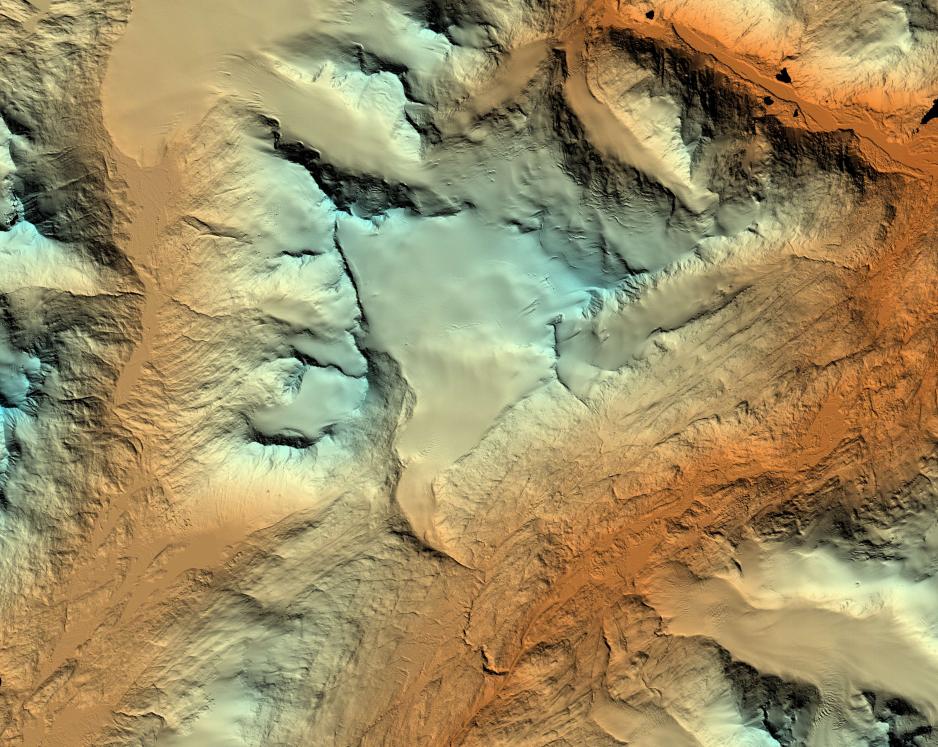New elevation maps a "game changer" for the Arctic

Most of Alaska and the Arctic lack reliable topographic maps, but last week a group of US agencies and universities publicly released maps that show Alaska’s terrain in greater detail than ever before.
“To help Alaskans better plan for sustainable development, the National Geospatial Agency and the National Science Foundation are leading a public-private collaboration to create the first-ever publicly available, high-resolution, satellite-based elevation map of Alaska by next year and the entire Arctic by the year after that,” announced US President Barack Obama in a speech during his visit to Alaska in September last year.
The 3D topographic maps of Alaska were released on September 1 and are the first results of the Arctic Digital Elevation Models (Arctic DEMs) project that was established in January 2015 by President Obama’s Executive Order on Enhancing Coordination on National Efforts in the Arctic.
Measures climate change
“From a scientific standpoint, topographic data is probably one of the most important datasets there is, because it gives us an idea of ice volume, geology and biology,” said the Director of the University of Minnesota’s Polar Geospatial Center Paul Morin in an interview with High North News. The Polar Geospatial Center is a leading partner in the project.
But this data is not only important for scientists – it is also important for local communities living in the Arctic.
The Arctic DEMs will serve as a benchmark for measuring future climate change in the Arctic. According to a White House blog post, satellite imagery can be collected at regular intervals, in order to observe and document changes as they occur. The elevation maps can among other things be used to quantify changes in sea level and monitor coastal erosion, and thus help identify areas at risk of storm-surge damage. It can also be used to watch ice extent, permafrost and vegetation change over time. In turn, this will allow Arctic stakeholders to develop responses and prepare for the effects of climate change.
As the Arctic warms and sea ice shrink, the ability to identify at-risk areas becomes growingly important.
A “game changer” for the Arctic
The digital elevation models are based on 2-meter resolution images captured by commercial satellites licensed by the NGA, while previous topographic maps of Alaska were at 196-foot resolution (approximately 60 meters). Using satellite imagery allows for a much wider coverage of the Arctic than the traditional method of data collection by low flying aircraft, particularly in this region. According to Morin, the best quality topographic maps are produced with LIDAR, a surveying technology that creates maps from data gathered via low flying aircraft.
However, data collection by airplane is very costly, time consuming, and sometimes even dangerous. It is simply not possible to use this method for the most inhospitable and remote areas of the polar region. Morin says that part of Alaska has already been mapped with the LIDAR technology, but that it took years to do.
Satellite imagery and DEMs on the other hand can be produced for the entire circum-Arctic. “The key thing is that this is a uniform, high resolution dataset for 20 million square kilometers,” said Morin. “Creating maps like these for such a wide area hasn’t ever been done before,” he added.
“This technology and resulting contributions are game changers for the Arctic region,” said the Director of the National Geospatial-Intelligence Agency Robert Cardillo to the White House Medium channel.
White House focus on climate resiliency in the Arctic
Satellite imagery collection in the Arctic has been going on for a while, says Brian Bates of the National Geospatial-Intelligence Agency in an interview with HNN. He adds that the NGA has worked with Paul Morin and the National Science Foundation for 6 years collecting the satellite imageries. Funding from the Obama administration has helped accelerate the project.
“When we realized that the Arctic Council wanted this data, we proposed to process it all. It created an opportunity that we couldn’t pass up,” says Morin.
Bates says that he NGA was looking for a way to support Obama’s executive order on enhanced coordination in the Arctic region. “We knew that the Arctic, as a poorly mapped region, would benefit from us providing digital or advanced mapping products,” he says.
Understanding and preparing for the effects of climate change in the Arctic has been an important part of the US Arctic Council Chairmanship. The Obama Administration and the White House Arctic Executive Steering Committee will host the first-ever Arctic Science Ministerial in the end of the month, with science ministers, chief science advisors and high-level officials from across the globe, as well as representatives from indigenous groups. Strengthening and integrating Arctic observations and data sharing will be an important topic during the meeting.
Read also: Papp hopes next president will carry on U.S. Arctic policies
Mapping the entire Arctic
The elevation maps of Alaska are only the first part of the project, and models of the entire Arctic are scheduled for release in mid 2017. This is possible because the NGA has licensed commercial satellites that can collect data from the entire region.
Bates says that there have been several meetings with representatives from the other Arctic governments regarding the project. However, with the possible exception of verification and validation from other countries, the bulk of the work when it comes to collecting the data, processing it and creating the DEMs is done by the United States.
The elevation maps and tools to explore them are available from the National Geospatial-Intelligence Agency.
